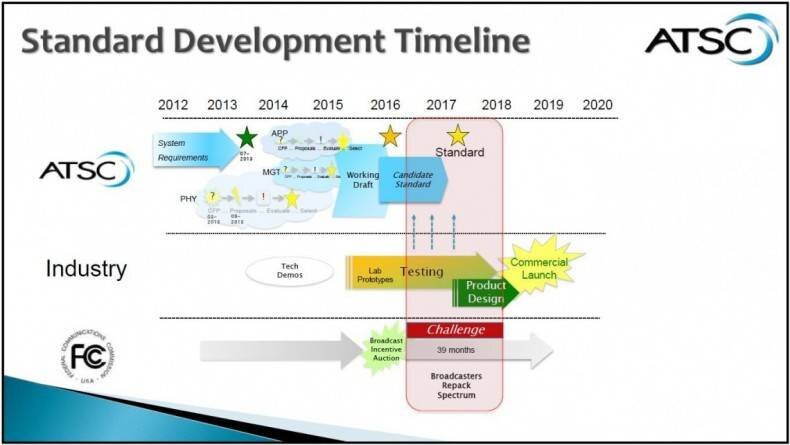You really are talking out of your rear end. I call 4K an upgrade in PQ.
You have the very terrible affliction of assuming that what can be done will materilize immediately, in abundance and in the most favorable way imaginable. As someone who works with DIRECTV, you know very well that UHD still hasn't materialized they way that they hyped it. Where DIRECTV promised many UHD channels by now, they now offer perhaps less than what they started with (you should well remember the parallels I drew to DIRECTV's much-ballyhooed 3D programming).
Bandwidth demands of running multiple standards dictate that UHD simply isn't sustainable in most of the larger markets until after DTV has been officially retired.
Also, the new transmission standards do raise the bar.
New does not necessarily mean better and what is provided for is no guarantee that it will come to pass on a fast track schedule (consider DIRECTV's Reverse Band hype). Many outliers lost significantly in the DTV transition and the utility of DXing was severely curtailed. Physics is a cruel mistress and there are almost always compromises when you seek to wring more out of the same bandwidth.
Again dead wrong, it's called, Authorizing Permissive Use of the "Next Generation" Broadcast Television Standard FCC docket GN No. 16-142 and you can read more on the plan for adoption in the stadards here, direct from the source.
Again, you make the possibly fatal assumption that permission equates to full support and/or a guarantee of unconditional success. There have been many permitted uses that just never caught on and were later denied for any number of reasons.
South Korea is actually a great example as it gives everyone a place to do real world testing without the headaces of deploying for thousands of stations. I dont know about you but I get my news out of south korea from news agancyies like MBC, KBS, and SBS, plus independant bloggers who talk about the technology.
A model must have very strong similarities. South Korea isn't even similar to most of our individual states, much less North America. I'd be willing to wager that the "independent bloggers" that you cite aren't all that independent. Many are probably aligned with the ATSC committee, the broadcasters or the manufacturers in some not-so-indirect way.
Actually we have room for multiple standards, you just need the FCC to stop selling the spectrum.
We both know that isn't going to happen. If you look, there may already be plans forming for the next auction of OTA bandwidth.
Turn off those blinders because your about to be amazed at what this industry is going to pull off.
It isn't a matter of having blinders. It is a matter of not buying into the propaganda of the TV stations and TV manufacturers that have very much to gain from a transition. Hype and what happens aren't very much connected and if you study the entire context of what is going on in the next five years (along with some of the dissenting analyses of when various milestones are likely to be met), you'll begin to see the smoke and mirrors.
What the broadcasters and manufacturers want and how the public votes with their wallets have never been (and are likely never to be) in much agreement. If the proponents try to force their hand, the public may just walk away out of frustration.


